My favourite of all the 42 billion internet cat videos (rough estimate), are the ones where they sound like they’re talking. Honestly, so odd. And yet aside from YouTube, I ordinarily avoid cat interactions because my body has the habit of sending its own eyes and nose into a watery mess when they’re near.
Nevertheless, said pathetic body has finally pulled itself together to write another blog post – this time for you my crazy cat lovers, to present to you some of the oddest members of the feline family that you hold so dear. Read on and let me know your favourites (or other additions you’d like to see here) in the comments below.

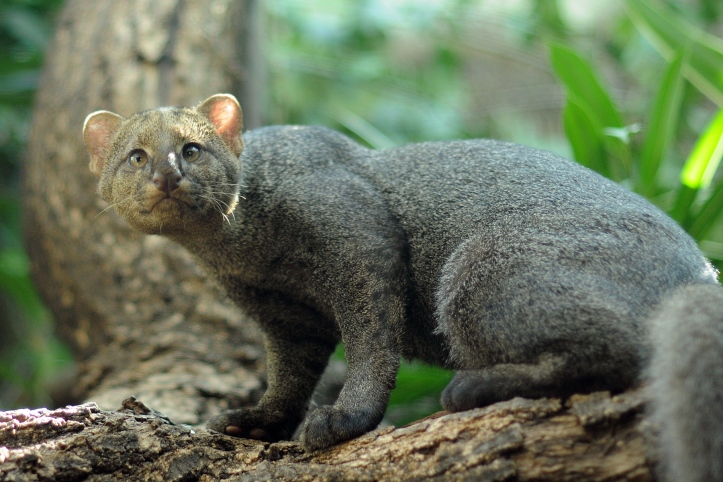
Who: Jaguarundi (Herpailurus yagouaroundi)
Where: Widespread throughout Central and South America
Status: Least concern
Little armchair ears and a very round face give the Jaguarundi it’s nicknames of the otter cat and weasel cat – but it’s closest relations aren’t either of these. The jaguarundi is actually most closely related to pumas (also known as mountain lions)… and the cheetah! Could ya have a cooler cousin?
They’re incredibly flexible predators, found from tropical forests to swampy marshlands and eating a very varied diet including (amongst many other things) short-tailed opossums, tufted-ear marmosets and fish.
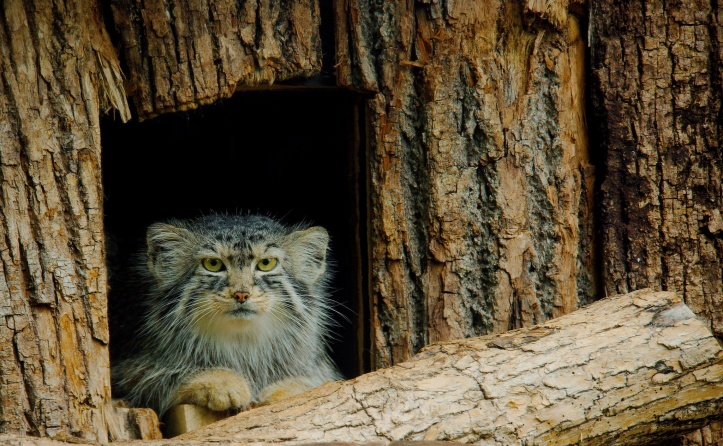
Who: Pallas’s cat (Otocolobus manul)
Where: The grasslands and montane steppe of central Asia.
Status: Near Threatened
First up, you are probably thinking – who is Pallas and why does his cat have a square shaped head? Well the answer to who, is Peter Simon Pallas. Peter was a German Zoologist who helped discover and classify a whole bunch of animals, including Pallas’s cat. He actually has other species named after him too: Pallas’s sandgrouse, Pallas’s viper, and my personal favourite, Pallas’s long-tongued bat.
The square shaped head comes because Pallas’s cats have ears low down on the sides of their head – something that helps them avoid detection when peering out from rocks to stalk prey. An old favourite, you’ll also find Pallas’s cat on my previous post: the top 10 weird mammals you should know more about.
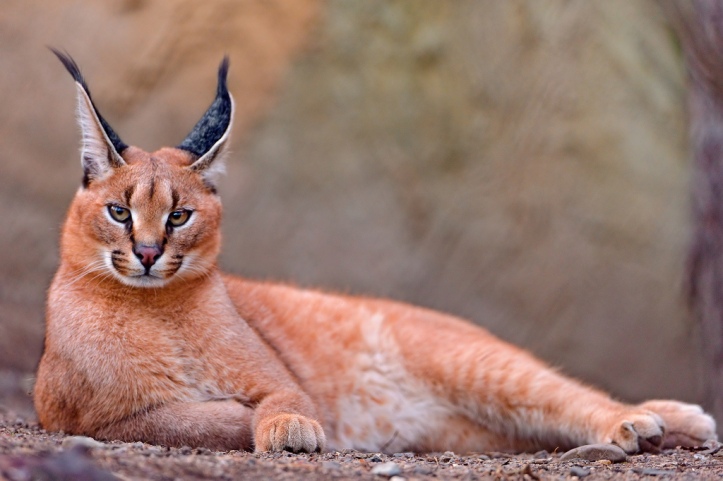
Who: Caracal (Caracal caracal)
Where: Africa and Asia
Status: Least concern
Are they not the sassiest looking cats around? Well caracals deserve their sass, they’re incredible jumpers and can leap around 3.5m in the air – from a standing position! In fact their excellent jumping meant that, back in the day, some people pitted them against each other to see how many pigeons they could catch when released into a feeding flock. Apparently the best scored up to 12 before the remaining pigeons flew away.
Thankfully, we’ve largely found other methods of amusement – but still to this day use the expression, a cat among the pigeons which almost definitely originated from this past time.
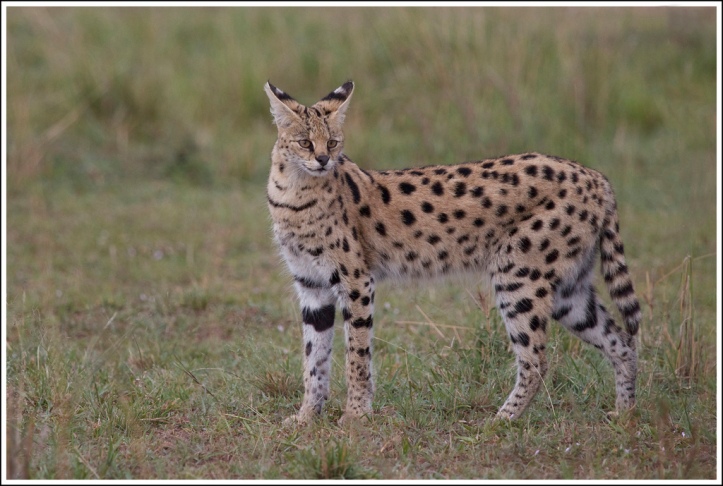
Who: Serval (Leptailurus serval)
Where: Sub-saharan Africa
Status: Least concern
With the longest legs of any cat, the shy, spotty serval is one odd looking felid. An extremely impressive hunter, one study found that servals had an 81% success rate when hunting rodents.
Unsurprisingly given those enormous ears, they rely mainly on sound to detect prey and when they find it will leap up and then pounce down – similar to a fox’s hunting technique. So basically, don’t be a rat near a serval.
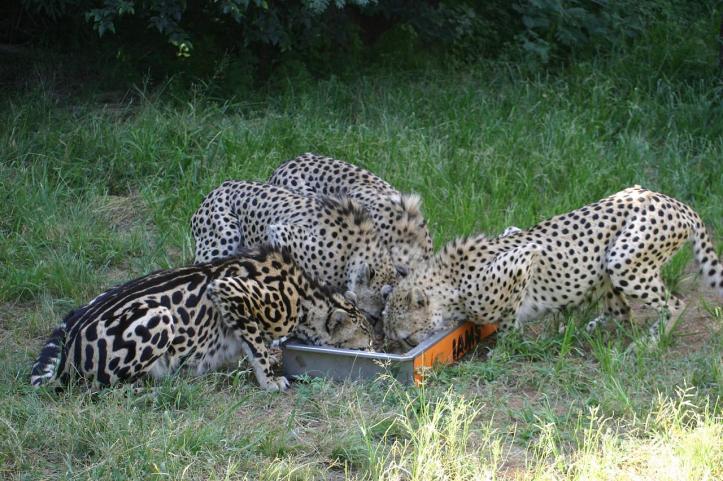
Who: King Cheetah (same species as regular cheetahs, Acinonyx jubatus)
Where: Southern and North West Africa
Status: Vulnerable
Spot the difference (honestly, what else could I have led with here) – because one of these cheetahs is not like the others. The cheetah on the left is a ‘king cheetah’, a cheetah with a rare genetic mutation that causes the coat to form blotchy stripes and spots instead of polka dots.
A recessive trait (like not being able to roll your tongue in humans), both mum and dad have to be a carrier for it to show up in their cubs.

References:
De Oliveira, T. (1998). Herpailurus yagouaroundi. Mammalian Species, (578), 1-6. doi:1. Retrieved from http://www.jstor.org.ezproxy.library.uwa.edu.au/stable/3504500 doi:1
Sunquist, F., & Sunquist, M. (2014). The Wild Cat Book: Everything you ever wanted to know about cats. University of Chicago Press.
Thiel, C. Ecology and population status of the Serval. Retrieved from http://hss.ulb.uni-bonn.de/2011/2586/2586a.pdf
Van Aarde, R. J., & Dyk, A. V. (1986). Inheritance of the king coat colour pattern in cheetahs Acinonyx jubatus. Journal of Zoology, 209(4), 573-578.
Love it! Really enjoy your writing style, Anna 😊
LikeLike
Hey!
Went diving in the river last night for some crabs. Saw this little dragon fish looking thing and have done some research. Its a Slender Seamoth! Thought it might be a great addition to your Odd Organisms if you have not featured this little guy yet. http://www.realmonstrosities.com/2013/12/sea-moth.html
On Wed, Sep 28, 2016 at 10:41 PM, Odd Organisms wrote:
> oddorganisms posted: “My favourite of all the 42 billion internet cat > videos (rough estimate), are the ones where they sound like they’re > talking. Honestly, so odd. And yet aside from YouTube, I ordinarily avoid > cat interactions because my body has the habit of sending its own” >
LikeLike
Aw man, top tip! Those are some seriously funky looking fish. I’ll have to do some research of my own and hopefully get a post out on them soon 😀
LikeLike